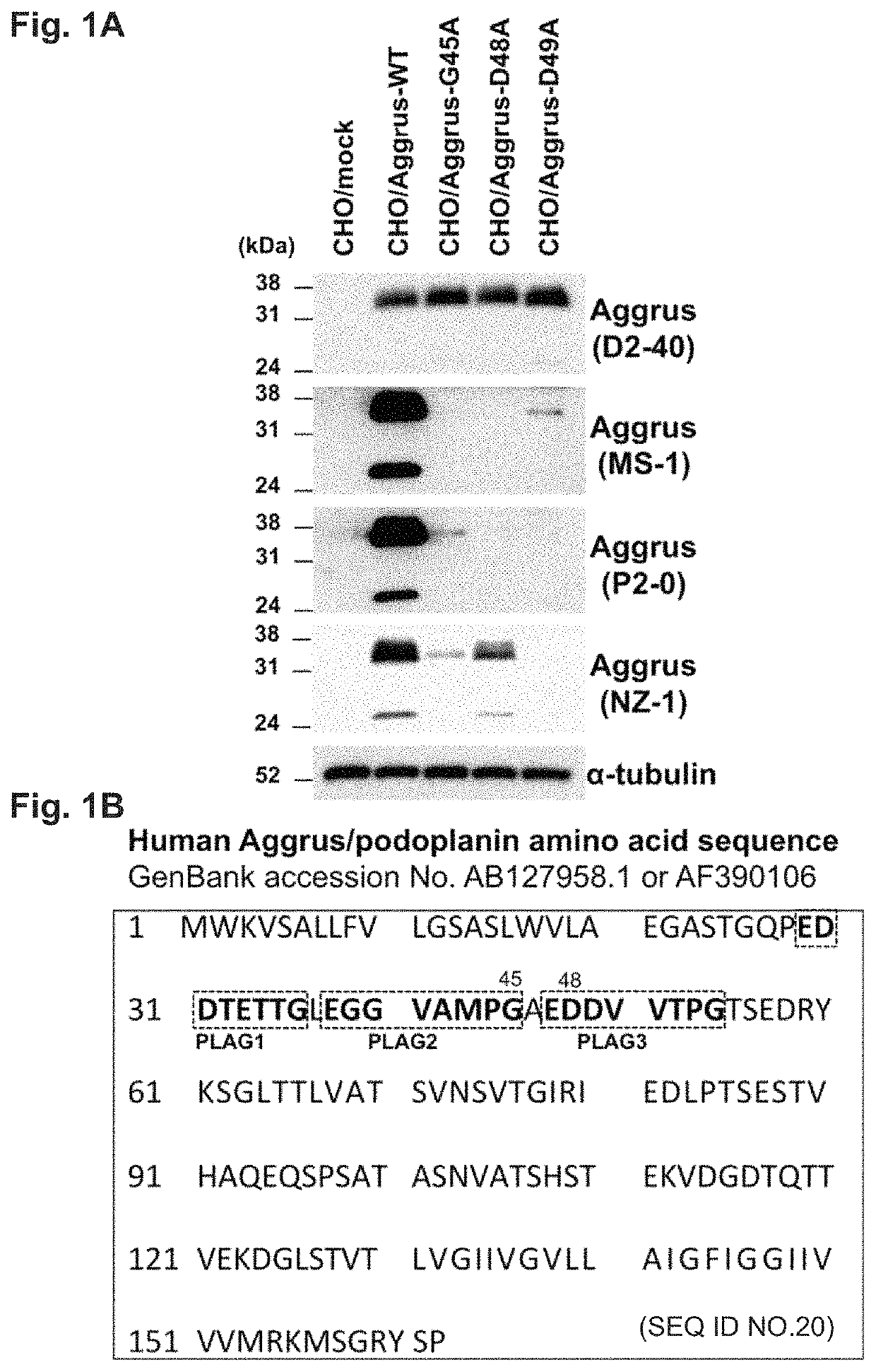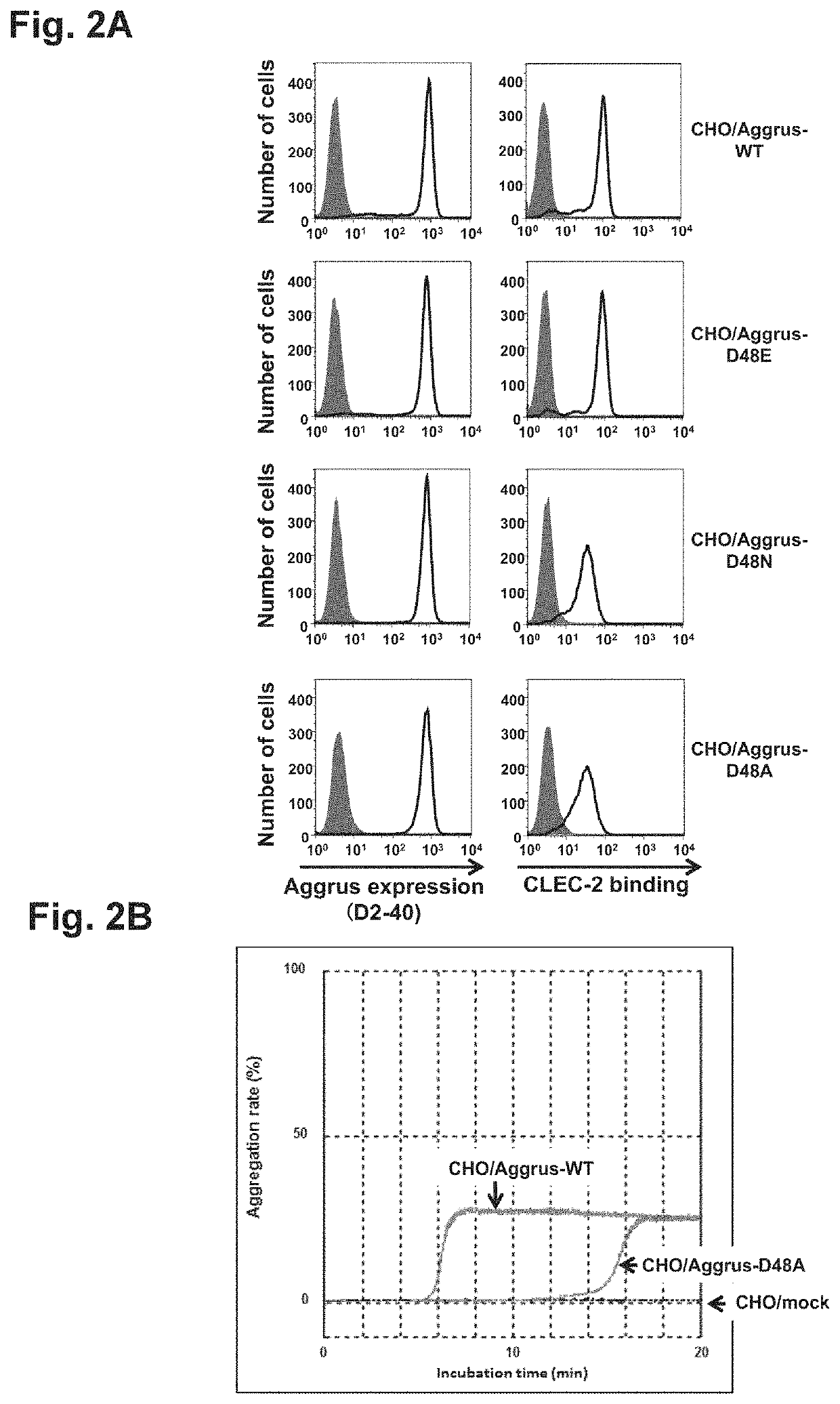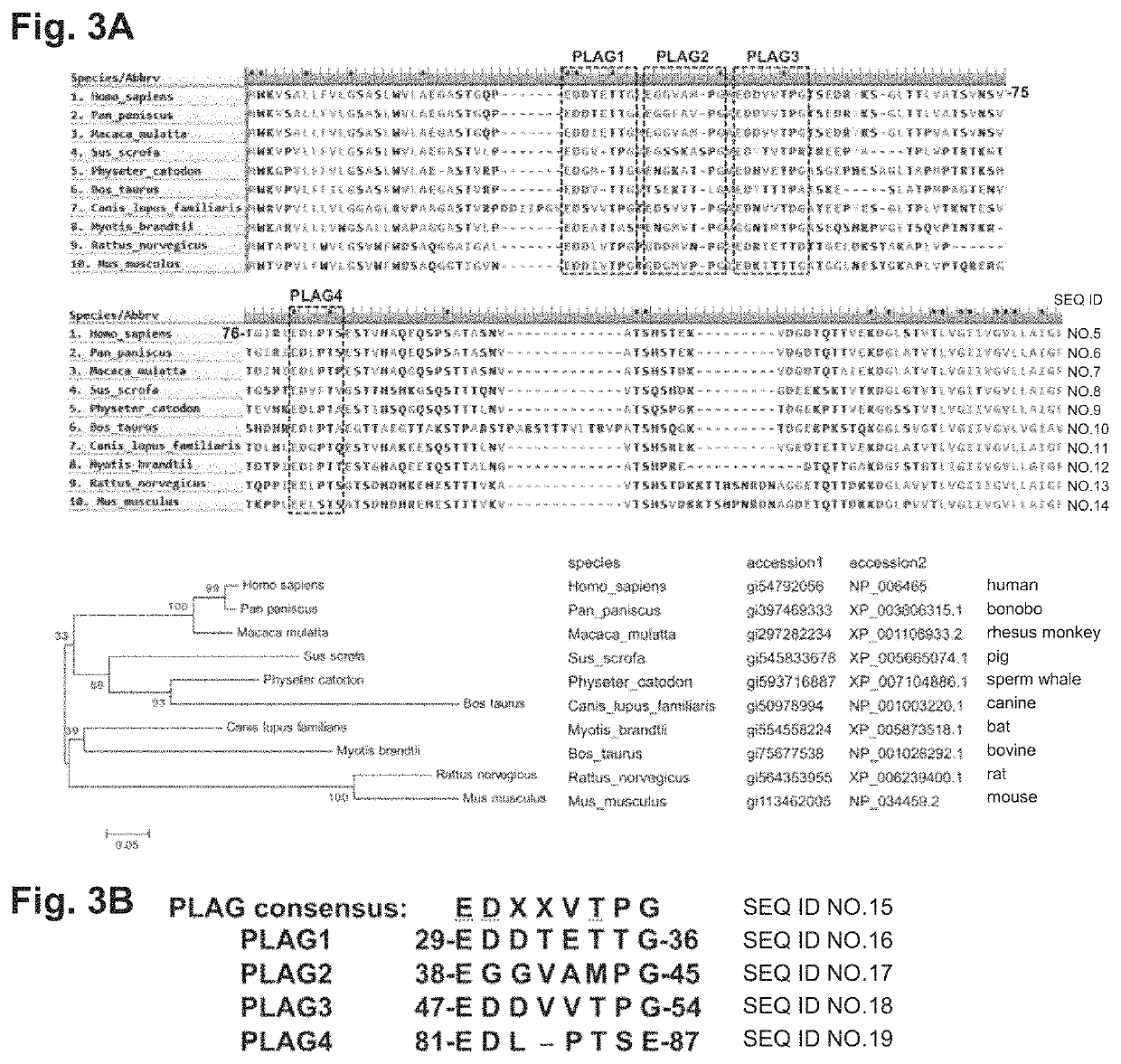Anti-Aggrus monoclonal antibody, domain in Aggrus which is required for binding to CLEC-2, and method for screening for Aggrus-CLEC-2 binding inhibitor
a technology of aggrus and antibody, applied in the field of anti-aggrus monoclonal antibody, domain in aggrus, can solve the problem of clinically great challenge in the prevention of cancer metastasis
- Summary
- Abstract
- Description
- Claims
- Application Information
AI Technical Summary
Benefits of technology
Problems solved by technology
Method used
Image
Examples
example 1
[0097]Examination of Recognition Site of Reported Neutralizing Antibody
[0098]The present inventors have already disclosed anti-Aggrus monoclonal antibodies that inhibit the binding to CLEC-2 and have a platelet aggregation inhibitory effect and a cancer metastasis inhibitory effect (Patent Literature 2 and Non Patent Literature 20). These monoclonal antibodies were antibodies recognizing a region over the PLAG2 and PLAG3 domains as an epitope.
[0099]First, the recognition sites of these neutralizing antibodies were examined. Chinese hamster ovary (CHO) cells were transfected with plasmids given below to express human Aggrus or an Aggrus mutant. The human Aggrus gene used was wild-type Aggrus cDNA (GenBank No. AB127958.1) and was amplified by PCR according to a routine method and cloned using pcDNA3 (manufactured by Life Technologies Corp.) as a vector.
[0100]The following constructs were used in the study on the recognition sites of the neutralizing antibodies. An empty pcDNA3 vector ...
example 2
[0105]Study on site of Aggrus involved in interaction with CLEC-2 and induction of platelet aggregation
[0106](1) Study on Role of Aspartic Acid at Position 48 of Aggrus in CLEC-2 Binding
[0107]CHO cells were transfected with plasmids containing human Aggrus cDNA or mutant cDNA thereof, and the role of aspartic acid at position 48 was studied. The wild-type Aggrus-expressing cell line CHO / Aggrus-WT and the mutant-expressing CHO cell line CHO / Aggrus-D48A prepared as described above, CHO / Aggrus-D48E harboring the substitution of aspartic acid at position 48 by glutamic acid, and CHO / Aggrus-D48N harboring the substitution of aspartic acid at position 48 by asparagine were used and studied for their reactivity with recombinant CLEC-2 by FACS.
[0108]First, Aggrus expression levels in the transfectants CHO / Aggrus-WT, CHO / Aggrus-D48E, CHO / Aggrus-D48N, and CHO / Aggrus-D48A were studied. Specifically, these transfectants were each recovered from a culture vessel, washed with PBS, and then adjust...
example 3
[0116]Finding of novel PLAG4 domain involved in binding to CLEC-2
[0117]The homology of the amino acid sequences of human (Homo sapiens, SEQ ID NO: 5), bonobo (Pan paniscus, SEQ ID NO: 6), rhesus monkey (Macaca mulatta, SEQ ID NO: 7), pig (Sus scrofa, SEQ ID NO: 8), sperm whale (Physeter catodon, SEQ ID NO: 9), bovine (Bos Laurus, SEQ ID NO: 10), canine (Canis lupus familiaris, SEQ ID NO: 11), bat (Myotis brandtii, SEQ ID NO: 12), rat (Rattus norvegicus, SEQ ID NO: 13), and mouse (Mus musculus, SEQ ID NO: 14) Aggrus proteins was studied from a mammalian phylogenetic tree (lower panel of FIG. 3A).
[0118]FIG. 3A shows the alignment of highly homologous regions of the Aggrus proteins of these animals. The sequences of the Aggrus proteins of the animals are based on the sequences of GenBank accession Nos. shown beneath FIG. 3A. As a result, a PLAG4 domain highly conserved in mammals, which is analogous to the previously reported PLAG domains 1 to 3, was found (FIG. 3A). FIG. 3B shows the ...
PUM
| Property | Measurement | Unit |
|---|---|---|
| flow rate | aaaaa | aaaaa |
| dissociation constants | aaaaa | aaaaa |
| concentrations | aaaaa | aaaaa |
Abstract
Description
Claims
Application Information
 Login to View More
Login to View More - R&D
- Intellectual Property
- Life Sciences
- Materials
- Tech Scout
- Unparalleled Data Quality
- Higher Quality Content
- 60% Fewer Hallucinations
Browse by: Latest US Patents, China's latest patents, Technical Efficacy Thesaurus, Application Domain, Technology Topic, Popular Technical Reports.
© 2025 PatSnap. All rights reserved.Legal|Privacy policy|Modern Slavery Act Transparency Statement|Sitemap|About US| Contact US: help@patsnap.com



